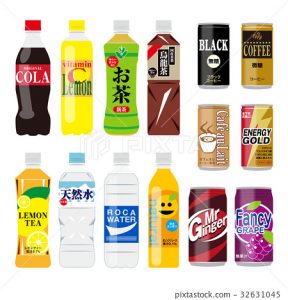Reducing waste and reusing materials, where possible, should come before recycling something. By reusing bottles, we reduce the amount of single-use packaging that needs to be created, reducing waste and a whole host of global environmental problems.
.
Glass is better than plastic?
It depends, as shown by new research from Prof Ian Williams and Alice Brock:
.
Ranked: the environmental impact of five different soft drink containers
People are increasingly aware of the harm plastic waste causes to wildlife, and many would avoid buying single-use plastics if they could help it. But are the alternatives to plastic much better?
Let’s look at one example – fizzy drinks. You might assume that plastic bottles are the least green option, but is that always the case?
To find out, we compared five different types of pressurised drinks containers. We tested their environmental impact according to a range of criteria, including how each contributes to climate change and the pollution each produces during manufacture, use and disposal.
Here they are, ranked from worst to best.
Fifth place: glass bottles…
… First place: recycled aluminium cans
Recycled aluminium cans were the least environmentally damaging single-use container we looked at. Aluminium can be constantly recycled with no change in properties. Recycling an aluminium can saves 95% of the energy used to make a new can and no new material needs to be mined or transported.
But aluminium isn’t always recycled. The UK’s recycling rate for aluminium packaging is just 52%. This must be drastically improved to make recycling the main supply of new cans.
Even if some of these containers are better than others, all of them have an environmental impact. The best option would be to phase out single-use packaging entirely, and introduce a system of reusing containers. Think self-serve drinks machines in local shops, where you could fill a bottle that you bring from home, or bottle return and reuse schemes.
Reducing waste and reusing materials, where possible, should come before recycling something. By reusing bottles, we reduce the amount of single-use packaging that needs to be created, reducing waste and a whole host of global environmental problems.
Ranked: the environmental impact of five different soft drink containers
Study: Glass Bottles Harm the Environment More Than Plastic Bottles – EcoWatch
.
Here’s another overview:
.
 Beverage Container Showdown: Plastic vs. Glass vs. Aluminum
Beverage Container Showdown: Plastic vs. Glass vs. Aluminum
And the Winner Is…
If you can find aluminum cans made from 100% recycled materials, they should be your top choice when shopping for single-serving beverages. Their low transportation footprint and ease of recyclability make them a winner. However, the extraction of raw bauxite is detrimental to the planet. New aluminum cans are not eco-friendly.
Glass should be your pick if recycled cans are not an option. Glass bottles are made from relatively innocuous raw materials and are, like aluminum cans, completely recyclable. Their weight and transportation footprint is their downfall.
Plastic does have a small carbon footprint when it comes to transportation, but it’s tough to ignore the giant carbon footprint when it comes to manufacturing. Plus, the plastic that doesn’t end up in a recycling bin can be a huge pollutant in our environment, killing wildlife and contaminating ecosystems. Our irresponsible use of plastic is ravaging the planet.
Beverage Container Showdown: Plastic vs. Glass vs. Aluminum | Earth 911
.
The packaging industry comments:
British Glass rejects claims glass among most environmentally…
LCA study investigates impacts of beverage packaging types | Food Packaging Forum
.
photo: Soft drink icon (PET bottle · can) – Stock Illustration [32631045] – PIXTA